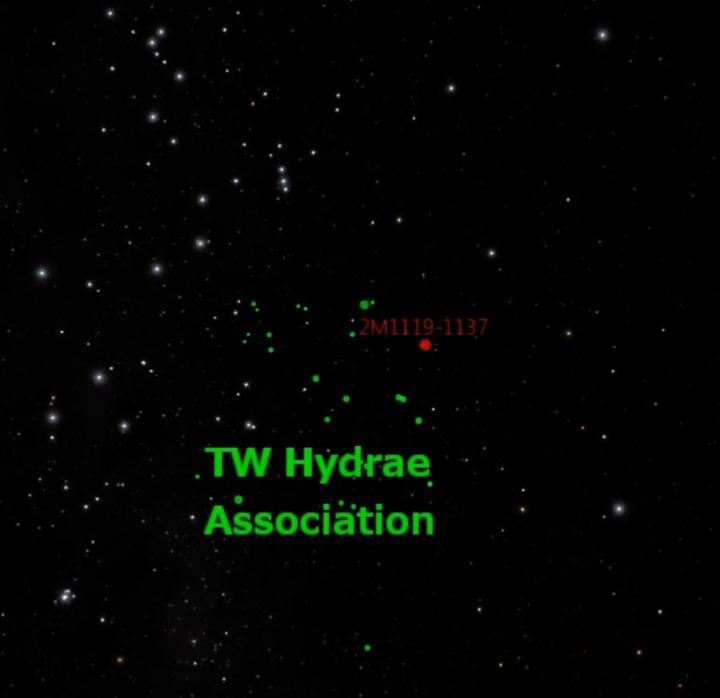
A huge, newly discovered alien planet that zooms through space without a parent star is one of the closest such "rogue" worlds to Earth yet seen, astronomers say.
The exoplanet, known as 2MASS J1119–1137, is four to eight times more massive than Jupiter and lies about 95 light-years from Earth at the moment, a new study reports.
The newfound world is only slightly less bright than the giant rogue planet PSO J318.5−22, which was first spotted in 2013 and is located about 80 light-years from Earth's solar system, researchers said.
Kendra Kellogg, a graduate student at Western University in Ontario, Canada, and her colleagues detected, confirmed and characterized 2MASS J1119–1137 using NASA's Wide-field Infrared Survey Explorer satellite and the Gemini South and Baade telescopes, both of which are in Chile.
The TW Hydrae stars — and 2MASS J1119–1137 as well — are just 10 million years old, study team members said. (For perspective, Earth's sun is nearly 4.6 billion years old, and the Big Bang that created the universe occurred about 13.8 billion years ago.)
PSO J318.5−22 is just slightly older than 2MASS J1119–1137, having been born about 23 million years ago, researchers said.

Such rogue worlds may have formed around host stars, and then been booted out into space by gravitational interactions with neighboring planets in their natal systems, researchers say. Whatever their origins, they are ripe targets for further study; in our Milky Way galaxy, rogue planets actually may outnumber "normal" worlds bound to parent stars.
Get the Space.com Newsletter
Breaking space news, the latest updates on rocket launches, skywatching events and more!
"Discovering free-floating planet analogs like 2MASS J1119–1137 and PSO J318.5−22 offers a great opportunity to study the nature of giant planets outside the solar system," Kellogg said in statement.
Rogues are "much easier to scrutinize than planets orbiting around other stars," she added. "Objects like 2MASS J1119–1137 are drifting in space all alone, and our observations are not overwhelmed by the brightness of a host star next door."
The new study will be published in The Astrophysical Journal Letters.
Follow Mike Wall on Twitter @michaeldwall and Google+. Follow us @Spacedotcom, Facebook or Google+. Originally published on Space.com.
Join our Space Forums to keep talking space on the latest missions, night sky and more! And if you have a news tip, correction or comment, let us know at: community@space.com.

Michael Wall is a Senior Space Writer with Space.com and joined the team in 2010. He primarily covers exoplanets, spaceflight and military space, but has been known to dabble in the space art beat. His book about the search for alien life, "Out There," was published on Nov. 13, 2018. Before becoming a science writer, Michael worked as a herpetologist and wildlife biologist. He has a Ph.D. in evolutionary biology from the University of Sydney, Australia, a bachelor's degree from the University of Arizona, and a graduate certificate in science writing from the University of California, Santa Cruz. To find out what his latest project is, you can follow Michael on Twitter.









